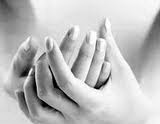阳
Basic conception
The yin and yang theory is dialectical materialist philosophy of ancient China. Ancient physicians, therefore, borrowed the yin and yang theory to explain the various phenomena of the human physiology, pathology, and to guide and summarize the medical knowledge and clinical experience, which gradually formed theoretical system of medicine based on yin and yang theory.
Natural variation and its laws are basis of exploration by theory of yin and yang on human body's physiological functions and pathological changes, therefore, showing the functional activity of the human body, organization structure and their mutual relations.

Anything can be classified into yin and yang, anything that is moving, outgoing, ascending, warm, bright belong to yang. Relatively things that are static, introvert, downward, cold, gloomy belong to yin. Substances and system for the human body that possess the functions of propelling, warming, exciting are attributed to yang. On the contrary, substances and system owning condensation, moistening and inhibition functions are attributed to yin. Yin and yang are within one thing which interrelated with each other or two aspects of one thing.
The yin-yang theory: Nature of any object or phenomenon contains two aspects that go against each other, impact each other. These two statuses remain changing all the time.
Characteristics of yin and yang
All moving, outgoing, ascending, warm, bright, invisible, excited pertain to yang;
All static, introvert, descending, cold, visible, and dim pertain to yin.
Relevance of yin and yang
Things and phenomena that can be analyzed by yin and yang should be in the same category, the same level, derived from the same foundation. Things not related with each other should not be sorted into yin or yang. For example, for one day, the daytime would be yang while the night being yin.
Universality of yin and yang
All properties of related object or phenomenon can be generalized and analyzed with yin and yang such as: water and fire, movement and stillness.
Relativity of yin and yang
Varieties of things or phenomena have changing properties of yin or yang and can convert into counter part in certain circumstances. Such as: the climate in October of central plains compared to summer in July is yin; while compared to winter in December, it is yang.
Divisibility of yang and yin
Yin or yang can be further divided, meaning that within yin and yang category, more yin and yang category can be distinguished ad infinitum. Take day (yang) and night (yin) for example.The day can be subdivided into morning (yang within yang) and the afternoon (yin within yang); while the night (yin) before midnight (yin within yin) and after midnight (yang within yin).
Application of yin and yang in medical science
- Relationship between yin-yang and human anatomy part:
Following the pattern that interiority part of body pertains to yang and exteriority part is yin, upper part is yang and lower part in yin, the back is yang and the abdomen part is yin, then skin and the hair on it belong to yang and the viscera belong to yin; head is geared to yang because it is on top of the body, while foot on the bottom, is yin.
- Relationship between yin-yang and human physiology:
It is the coordination of yin and yang within human body that decide the health condition of people. After the meals, foods in human body pass by spleen and stomach to be digested and transmitted nutrition to all parts of body, making the flesh tough and body strong, helping human stay dynamic and vigorous.
- Relationship between yin-yang and pathology of the human body:
After the loss of balance of yin and yang in human body, a variety of symptoms would appear, classified and represented by yin and yang.
Yang syndromes, with typical ones like: fever, thirst, fast pulse and so on, such symptoms were referred to hot (Yang) syndrome by the ancients.

Yin syndromes, normally having no fever, no thirst, slow pulse, cold hands and feet, known as cold (yin) syndrome.
This is what the Sutra says: "Hot when yang the yin, cold when yin surpasses yang".
Another deficiency of yin or yang refers to the imbalance of yin or yang below normal levels, while its counter part maintains normal, or, both of which stay lower than normal level, there comes the asthenia syndrome.

Deficiency of yin with normal amount of yang leads to yin deficiency and generates inner heat and vice versa. Lack of yang and yin thus leads to deficiency of yin as well as yang, this is the alleged “yin-yang deficiency” syndrome.
Application in diagnosis of yin and Yang:
yin and yang is the outline of diagnosis. Various diseases may there be, the property would be no more than yin other yang. Affected area is surface (yang) or inner place(yin). Judging from the nature of the disease: fever (Yang), cold (yin); from the perspective of disease trends: positive disease (Yang), or negative disease (yin).
In short, diseases properties can be summarized by yin and Yang.
Application of yin and Yang in treatment:
There are many kinds of traditional Chinese medicine, but their performances sorted in two types--yin or Yang. The drug properties include cold, hot, warm, cool, and the hot & warm ones are Yang, cold &cool ones are yin.
General principle on the treatment is to adjust the level of yin and Yang to reach the equilibrium, which is also the starting point of remedy.
In allusion to wax and wane of yin and Yang, traditional Chinese medicine usually complement the insufficient one and purge the overabundance one, correcting the abnormal phenomena and restoring their relative equilibrium.
In clinical treatment, drug that has a property of yin would be taken into use of curing yang syndrome and vice versa. In case of lacking both: complement with both yin and yang medicine.